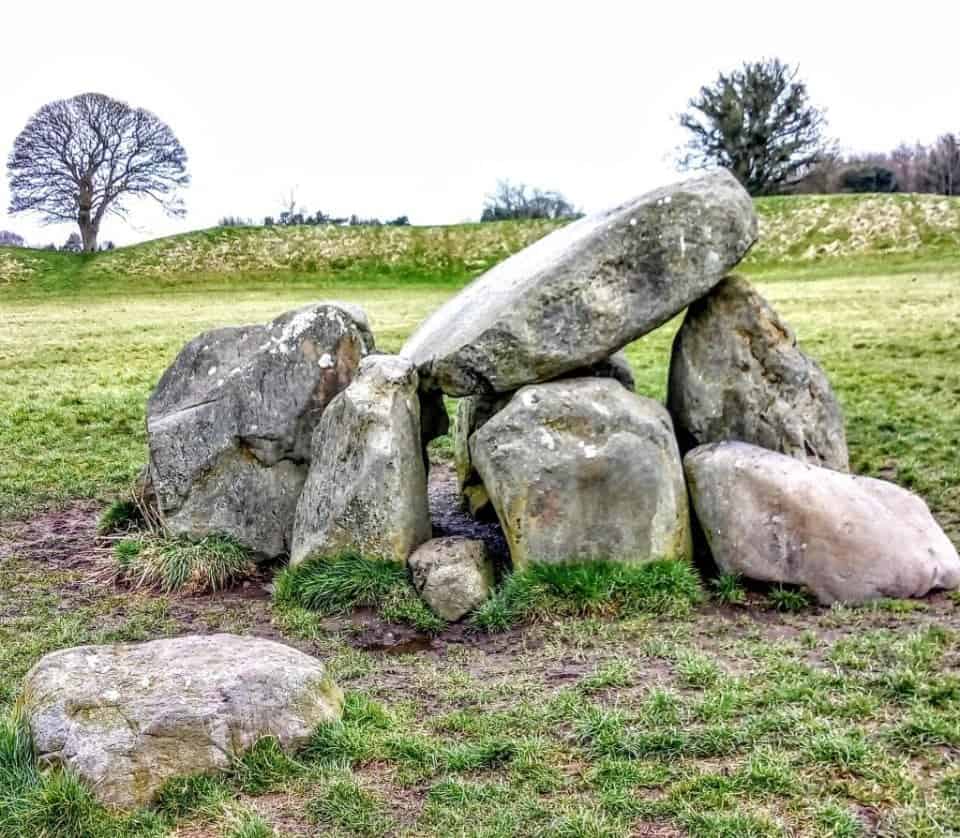Northern Ireland’s winding lanes and ancient roads can lead to incredible ancient monuments from the Stone Age onwards. Shrouded in mystery and kept safe by legends these ancient monuments are a source of intrigue for both the locals and the tourists.

Found all over Ireland and dating back tens of thousands of years stone circles tend to be much smaller than places than stone circles found in Britain. Many are on private land and can be difficult to find and hard to get to.
How many stone circles are there in Ireland?
In the Republic of Ireland, 187 stone circles have been found. The majority of these circles are in County Cork where there are 187, County Mayo which has 11 and County Kerry with 20.
In Northern Ireland, there are over 147 stone circles and standing stones listed with various heritage and historical sources.

Beaghmore Stone Circles
Blackrock Road, Cookstown, County Tyrone, BT80 9PB
Nestled amongst the green grass and heather clad moorland sit 7 mystical circles, 10 rows of stones and 12 cairns, carefully arranged. Beaghmore (Bheitheach Mhór), meaning ‘big place of birch trees’ was once a dense woodland before being cleared by Neolithic farmers.
The circles and alignments were discovered in the late 1930s during peat cutting when 1,269 stones were uncovered. The site and the surrounding bog indicate that the area was occupied from Neolithic times through the Bronze Age. Hearths and deposits of flint tools have been carbon dated to 2900-2600BC.

Several of the stone rows run over the tumbled walls of field structures which also date from Neolithic times. Look closely at some of the stones and what may seem as ancient chisel marks bear a resemblance to our oldest known Celtic writing.
Ogham, a secret and sacred writing, was a system of symbols used for magic and divination. The circles and alignments, however, remain a mystery.

No-one really knows why this intriguing cluster of stones was created. Some archaeologists believe that the circles have been constructed in relation to the midsummer sunrise, or to record the movements of the sun and moon acting as markers in a calendar to identify certain lunar, solar or stellar events. Three of the stone rows point to sunrise at the solstice and another appears to be aligned towards a lunar maximum.

The stones speak of ancient rituals and to a people who understood astronomy. When you visit this ancient site look up in wonder at the sky and reflect, that the people that built these monuments observed the same sky, sun, moon and stars.
Where to see other Stone Circles in Northern Ireland?
The Giant’s Ring
Easy to find and only around 7km from Belfast centre The Giant’s Ring is a massive monument believed to be one of Ireland’s few henges. It is thought that the Ring was built by the late Neolithic people and was a centre of great ceremonial and ritual importance. Within the centre of the enclosure which is a high bank is a small passage tomb and to the east of that is a huge broken standing stone.

Ballynoe Stone Circle
Ballynoe Stone Circle can be found around a kilometre from Downpatrick near the old train station where there is a long footpath to the circles. This is a very large site with over 50 closed-spaced stones in the stone circle. Within the circle is a small mound of stones supporting a platform.
There were two large “kists” (which are burial spaces or stone coffins) in which were found cremated bones.

Drumskinny Stone Circle
There are many stone circles located in Ireland but Drumskinny County Fermanagh is one that is easily accessible with a path to the actual circle. Drumskinny is listed as a State Care Historic Monument and probably dates back to 2250 BC. There are 39 stones and a small round cairn at the site.
Clogherny Wedge Tomb
Near Plumbridge Omagh in County Tyrone, you will find this well-preserved stone circle. There is a wedge tomb surrounded by 11 standing stones and believed to date back to the early Bronze age around 2000BC. This site is a Scheduled Historic Monument.

